Armament
This section shows a selection of the different types of weapons that were used in the local naval anti-aircraft batteries, the anti-aircraft schools and the air defense positions.
8.8 cm SK L/45 Marine Kanone
The starting point for the 8.8 cm SK L/45 was the 8.8 cm Flak 16 anti-aircraft gun developed in 1915. The SKL 45 was used primarily on warships of the Imperial Navy to combat torpedo boats, mines and for torpedo defense. The naval gun's massive frontal armor against projectile splinters was striking. With the start of the Second World War, the German Reich's air defense began to be significantly strengthened. In the areas where this was done by the Navy, it was decided to use the old ship's guns in the anti-aircraft batteries accordingly. These anti-aircraft guns were initially used in all batteries of the Marine Flakabteilung 214 / Cuxhaven.Source: Waffen Revue 28
| Technical specifications | |
|---|---|
| Military designation: | |
| Developer/Manufacturer: | Krupp, Essen / Rheinmetall |
| Year of development: | 1915 |
| 3965 mm | |
| 88 mm | |
| Feuerrate | 16 shots/min |
| Altitude range: | |
| Rotation range: | 360° |
| Shooting range | About. 14,100 meters |
| Shot height | About. 9,150 meters |
| total weight | 2.5 tons |
Quelle: Wikipedia
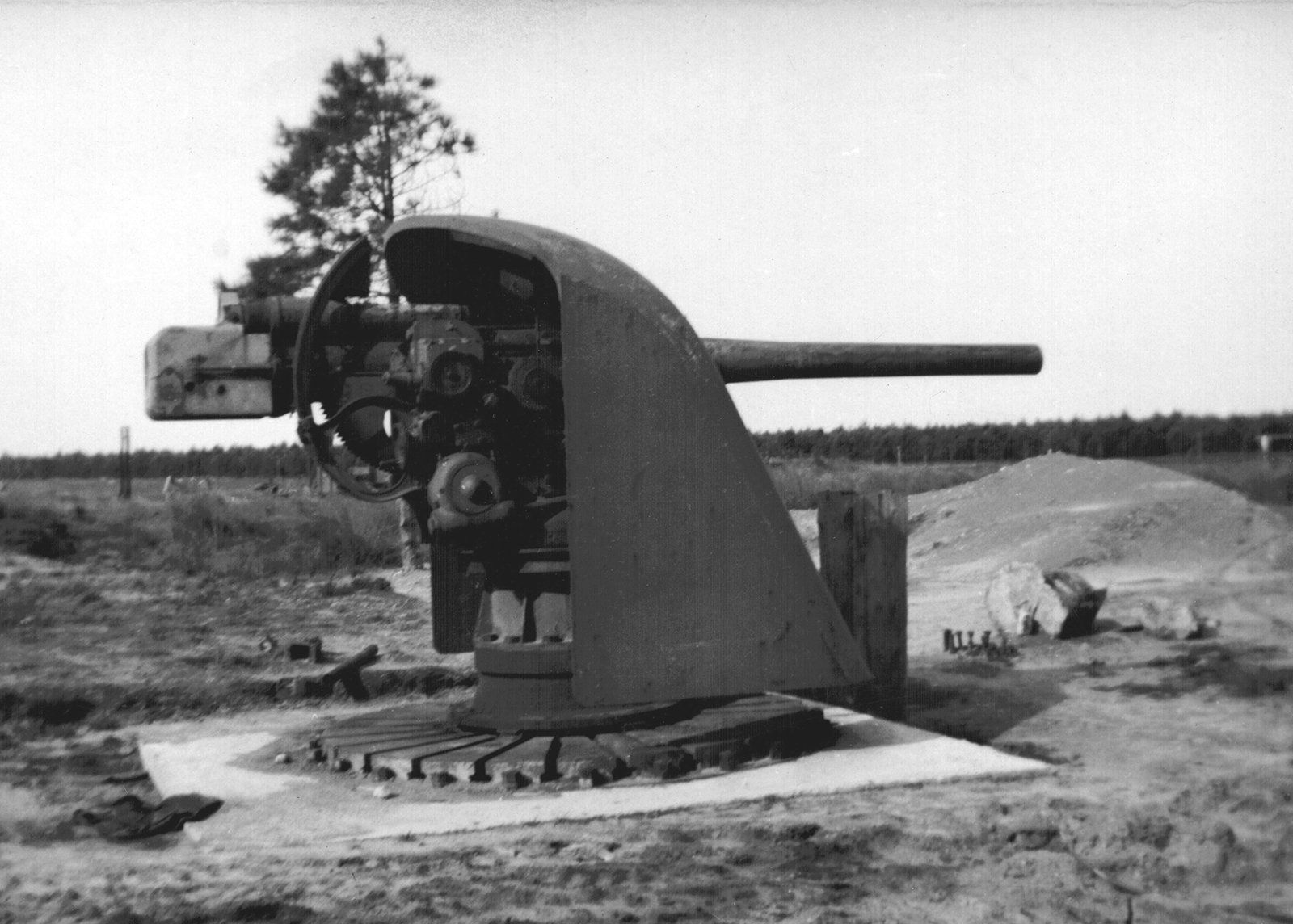

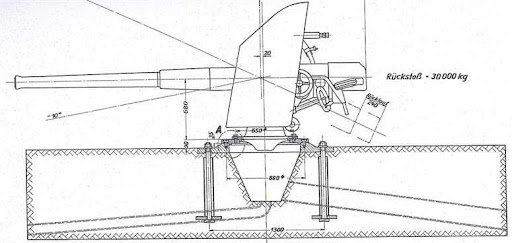
10.5 cm SKC 32 - Marine Kanone
From 1936 onwards, the 10.5 cm Flak 38 formed the backbone of the German Reich's air defence system. It was usually mounted on a cross-carriage, which allowed a rotation range of 360°. The elevation and azimuth were controlled by direct current electric motors. The weapon had an automatic loading mechanism and was able to automatically set rough target values using the radar equipment used at the time.
The 14,600 kilogram anti-aircraft gun was mostly used in a stationary position. The 10.5 cm SKC/32 was developed for the navy. It was used on submarines, battleships, but also in stationary gun positions, primarily for air defense. The 15.1 kg high-explosive grenade and the 15.6 kg tank grenade could be fired 12.8 km high or up to 17 km away. The service life of a barrel was approximately 1,500 to 3,500 shots. By the end of 1941 at the latest, all Cuxhaven anti-aircraft batteries were equipped with this type of gun. It was also provided with a protective cover (turtle shell) to protect against projectile splinters.Source: Wikipedia
| Technical specifications | |
|---|---|
| Military designation: | 10.5 cm Flak SKC 32 |
| Developer/Manufacturer: | Rheinmetall, Düsseldorf |
| Year of development: | 1933 to 1935 |
| 6,648 m | |
| 105 mm | |
| Feuerrate | |
| Altitude range: | |
| Rotation range: | 360° |
| Shooting range | About. 17,000 meters |
| Shot height | About. 12,800 meters |
Quelle: Wikipedia
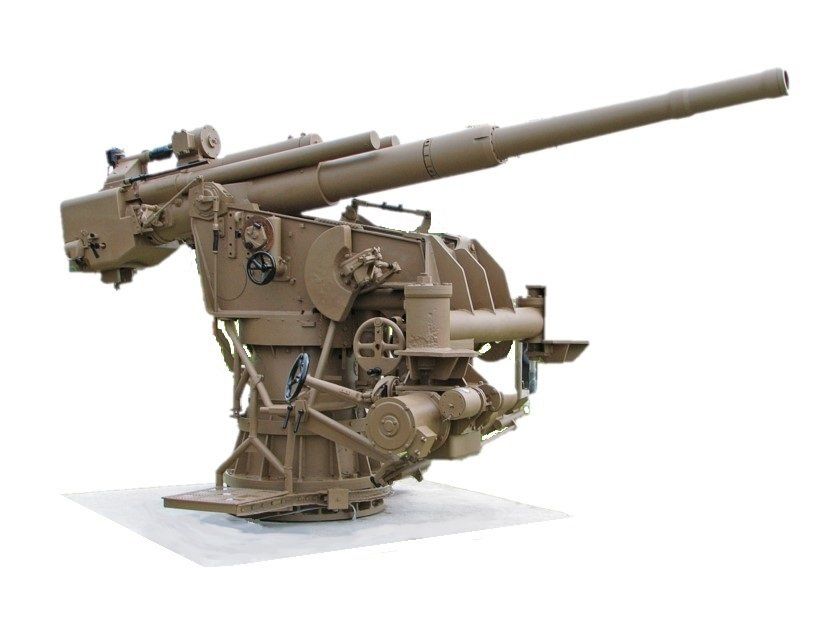
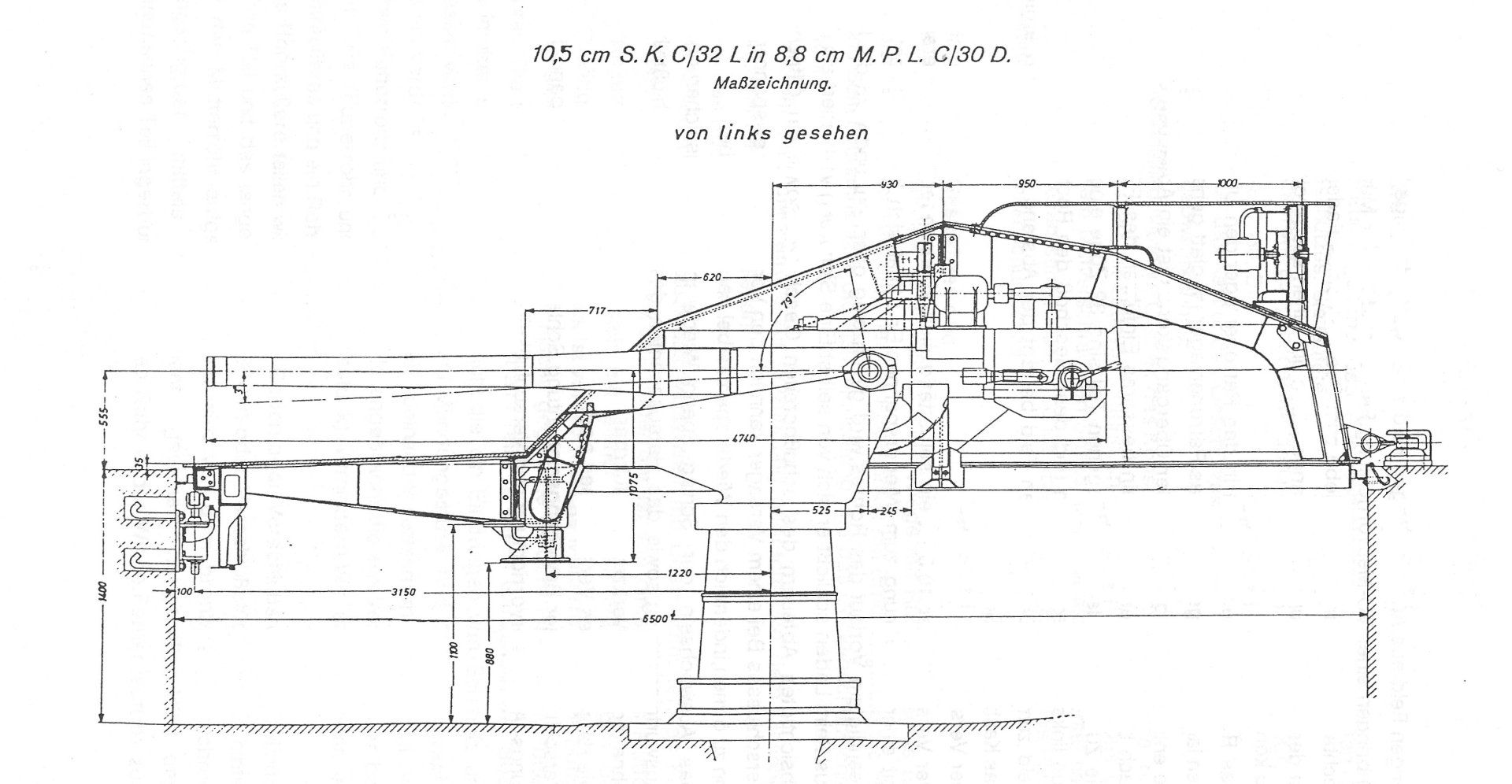
- 10.5 cm - caliber of the gunS.K. - quick-loading cannonC 32 - the year the barrel was designedn.L - new barrel design with loading devicein 8.8 cm MPL - the gun stands on a firmly screwed base and can be swiveled 360 degrees.C 30 - year the pivot base was designed D - with protective cover (turtle shell)
Source: Marine helpers in the Kugelbake/H..Schönemann battery
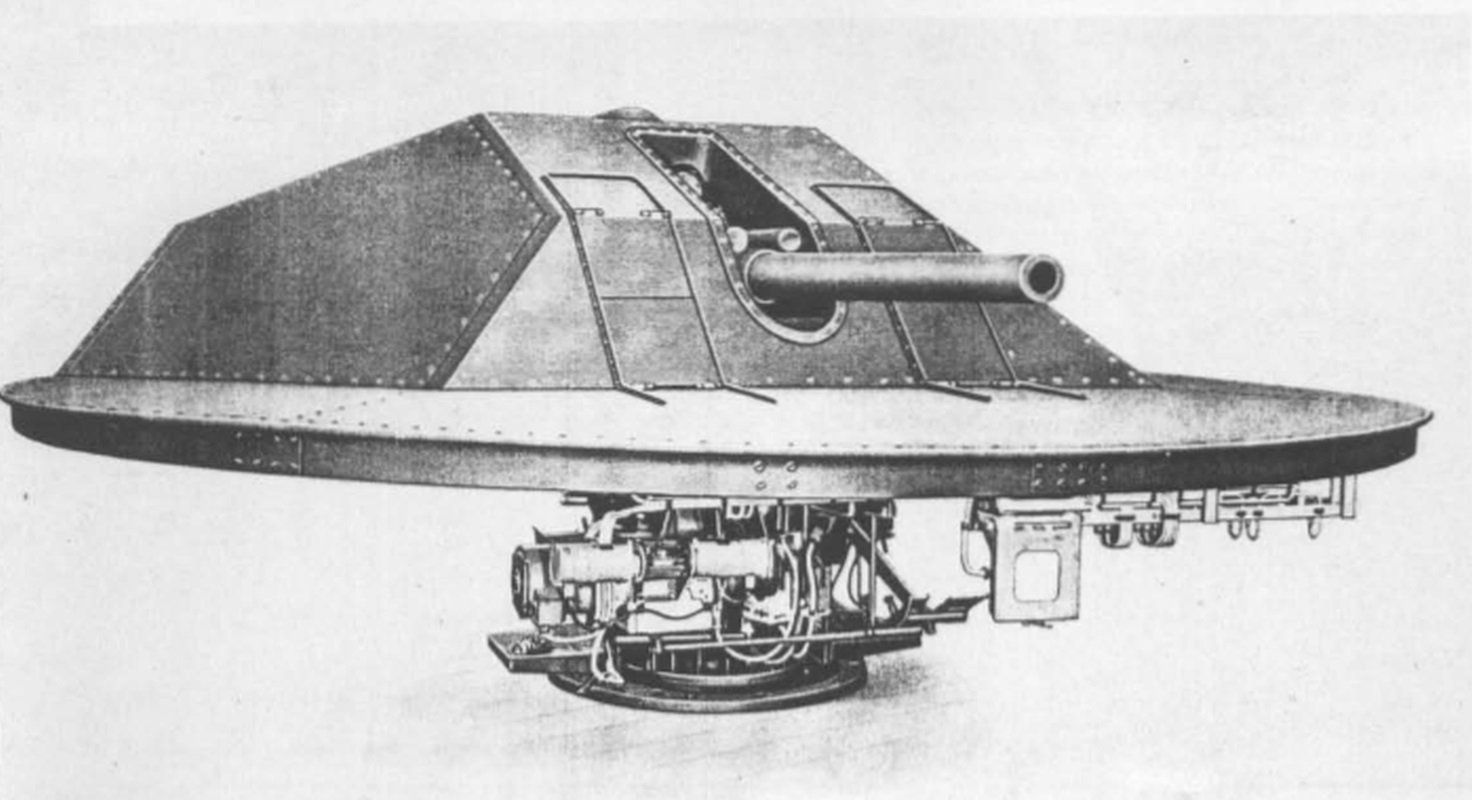
The 10.5 cm SKC/32 L naval version in 8.8 cm MPLC/30 D, where the >D< stands for protective cover shield. This gun type with its turtle shell was intended for installation in a boiler bed. Source: Waffenarsenal S-15
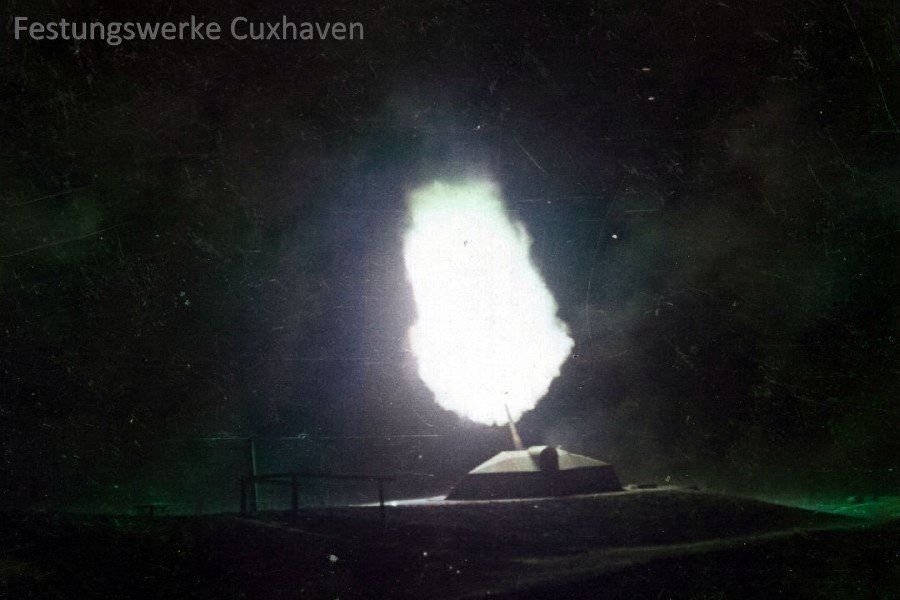
10.5 cm SK C/32 of the Drangst battery fires.
Ignition control machine
Until shortly before the end of the war, the projectiles of the larger anti-aircraft guns with a caliber of over 4 cm only had time fuses. A clockwork (type ZtZ S/30) developed by the Gebr. Thiel watch factory (→ Gerätebau GmbH) was built into the head of the grenade, which detonated the grenade after an adjustable running time of 1.5 to 29.5 seconds. The delay time was calculated by the so-called "command device". This mechanical analogue computer determined the lead and thus the running time of the projectile from the determined values of the aircraft's course and altitude. Before firing, the delay time had to be set in the "fuze setting machine" on each grenade. Since there was no impact fuse, it often happened that the anti-aircraft grenade penetrated part of the aircraft and only exploded far behind it. The introduction of additional impact fuses (double fuses), which was not implemented until 1945 despite the requirement, meant that the launch rate could be increased threefold.Source: https://de.wikipedia.org/wiki/Flugabwehrkanone
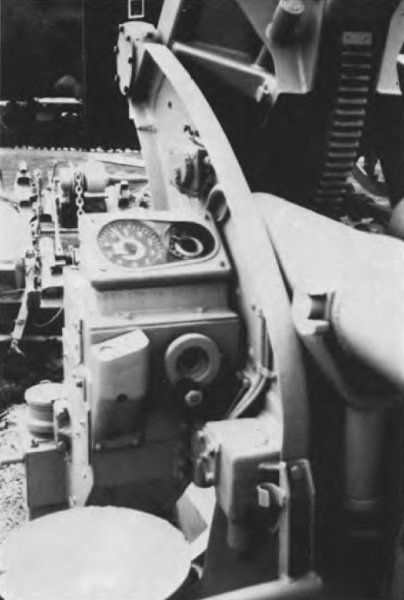
Picture left: Operator's position at the ignition control machine. He enters the values calculated by the control device into the device by comparing the subsequent indicators.
Picture right: Inserting the anti-aircraft grenades into the ignition machine shortly before launch. The machine transfers the values mechanically to the time fuse of the grenade.
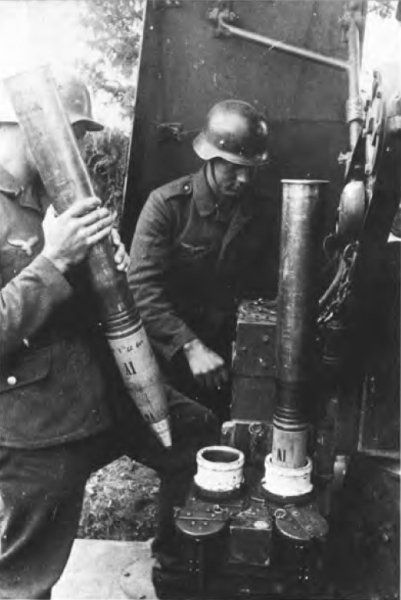
10,5 cm Flakmunition
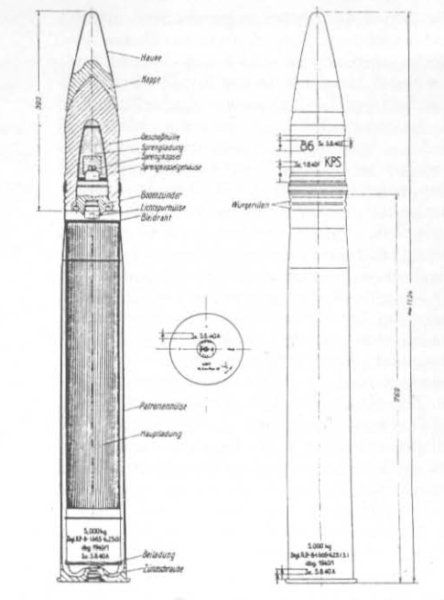
10,5 cm Panzergranatenpatrone - Flak
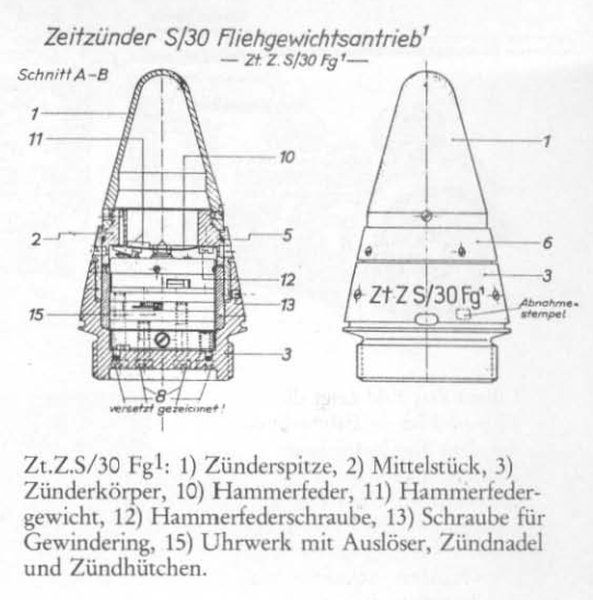
Die Geschosshülse war aus Messing oder Stahl geschmiedet. Das gesamte Projektil wog 26,1 Kg, davon allein der Gefechtskopf 15,5 Kg. Die Treibladung hatte je nach Pulverart ein Gewicht zwischen 5 bis 6 Kg, das Gewicht der Sprengladung betrug ca 1,5 Kg. Beim Beschuss von Luftzielen kam ein Zeitzünder in zwei verschiedenen Varianten zum Einsatz (Bsp. oben), im späteren Verlauf wurde noch ein Aufschlagzünder verbaut.
Die Anfangsgeschwindigkeit der Granate betrug 785 m/s. Bei einem Rohrwinkel von 43,8 Grad betrug die Reichweite 17700 Meter. Bei 85 Grad Aufstellwinkel verringerte sich die Höhe auf etwa 12.000 Meter. Die Flugzeit der Geschosse betrug ca. 27 - 29 Sekunden, um eine Höhe von 10.000 Metern zu erreichen. Während des Gefechtsschießen liefen in den Geschützständen permanent Lüfter, um Pulverdämpfe und die Hitze über Zwangsbelüftungen abzuführen.
Fotoquelle + Textteile: Heft Waffenarsenal Sonderband S 15- Werner Müller, weitere Textinformationen: Fort Kugelbake, Festung Cuxhaven- Gerd Wildfang
3,7 cm Flak 36/37
In mid-1930, the Rheinmetall company was commissioned to develop a light anti-aircraft gun with a caliber of 37 mm. It was basically an enlarged version of the 2 cm Flak 30. With the introduction of a new sighting device in 1936, the name changed to 3.7 cm Flak 37. A wheeled carriage was also developed for the gun, which made it very mobile. However, it could also be separated from the trailer and used stationary. It was subsequently fitted with a protective shield.Source: WW2technik.de
| Technical specifications | ||
|---|---|---|
| Military designation: | ||
| Developer/Manufacturer: | ||
| Year of development: | 1935 | |
| 2,112 m | ||
| 37 mm | ||
| Feuerrate | 160 rounds/min | |
| Altitude range: | −8° to 85 degrees | |
| Rotation range: | 360° | |
| Shooting range | About. 6,500 meters | |
| Shot height | About. 4,800 Meters |
Quelle: Wikipedia 3.7 cm Flak 37
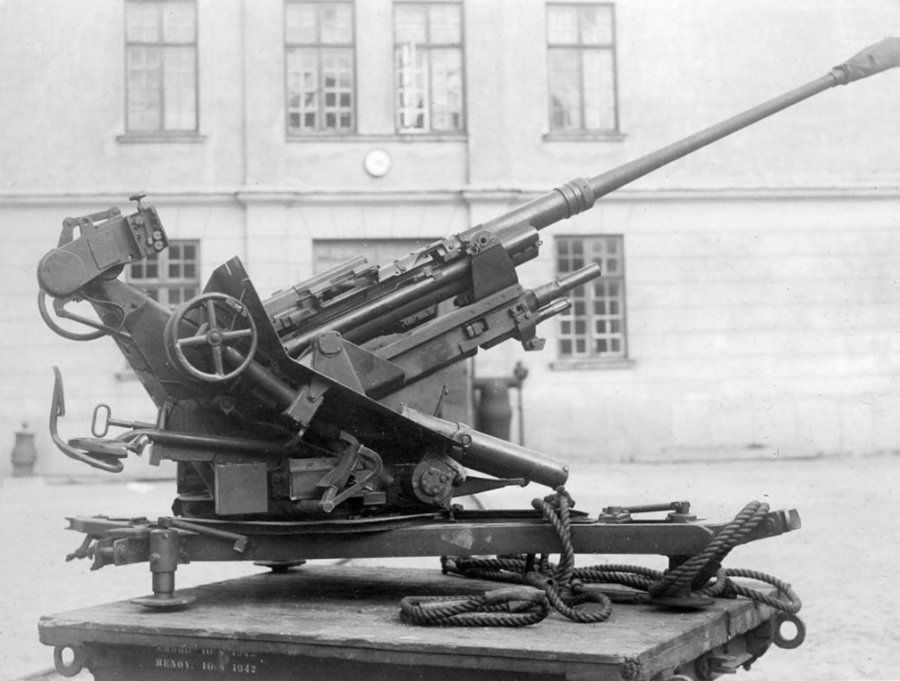

2 cm Flak 38
In 1935, Rheinmetall-Borsig developed the 2 cm Flak 38 to defend against low-flying aircraft. This was an improved version of the 2 cm Flak 30. It was delivered to various Wehrmacht units from 1939 onwards. The rarer version of the Kriegsmarine was called the 2 cm Flak C/38. It was developed by the Mauser works in Oberndorf. The standard ammunition used was the 20×138 mm B grenade cartridge. The biggest difference to the 2 cm Flak 30 was the higher firing frequency, and the cannon also had a protective shield.Source: Wikipedia
| Technical specifications | |
|---|---|
| Military designation: | 2 cm Flak 38 |
| Developer/Manufacturer: | |
| Year of development: | 1935 |
| 1,30 m | |
| 20 mm | |
| Feuerrate | 450 rounds/min |
| Altitude range: | −20° to 90 degrees |
| Rotation range: | 360° |
| Shooting range | About. 4,800 meters |
| Shot height | About. 3,700 meters |
Quelle: Wikipedia 2-cm-Flak 38
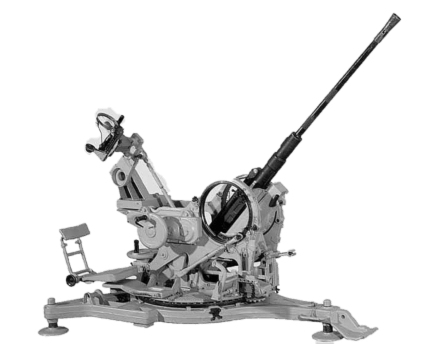
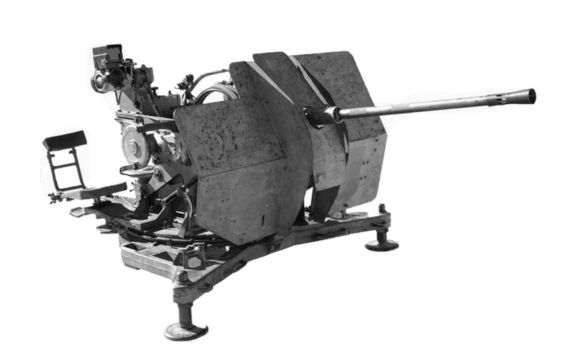
2 cm Flak - Quad 38
Designed in 1938 from the 2 cm Flak 38 for use on ships of the Kriegsmarine, the gun was later adopted by the entire Wehrmacht. The Flak-Vierling 38 was widely used as a defensive weapon against low-flying aircraft and was often part of flak towers, armored trains and other fortified air defense positions. The weapon could also be used in ground combat in an emergency. The source: Wikipedia
| Technical specifications | |
|---|---|
| Military designation: | 2 cm Flak - Quad 38 |
| Developer/Manufacturer: | |
| Year of development: | 1938 |
| 1,30 m | |
| 20 mm | |
| Feuerrate | 1800 rounds/min |
| Altitude range: | −10° to 100 degrees |
| Rotation range: | 360° |
| Shooting range | About. 4,800 meters |
| Shot height | About. 3,700 meters |
Quelle: Wikipedia 2-cm-Flak 38
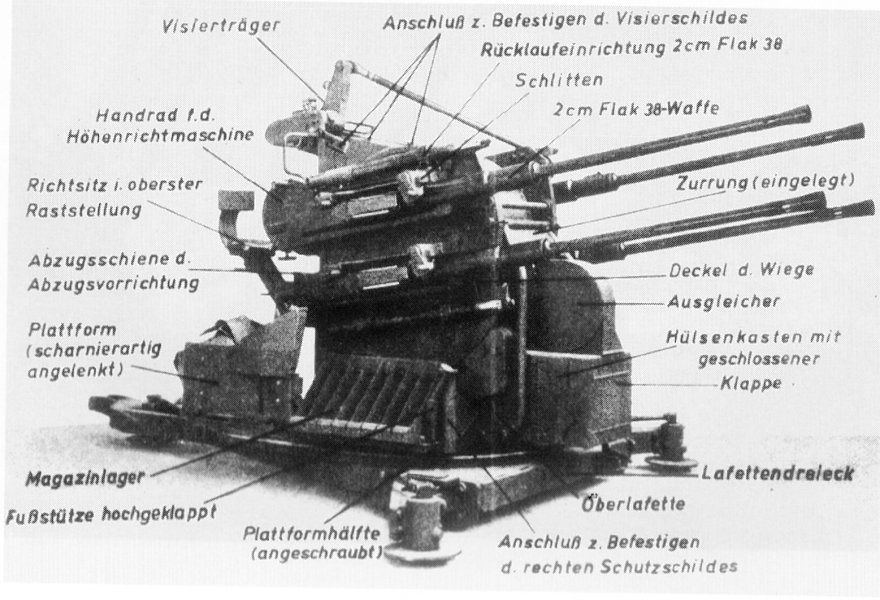
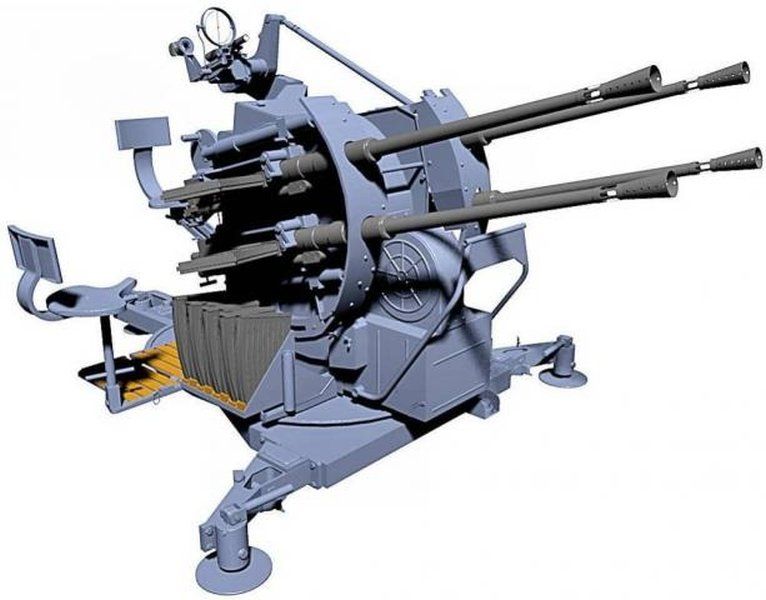
Quelle: www.o5m6.de - scaled,multi-view and coloured Profiles
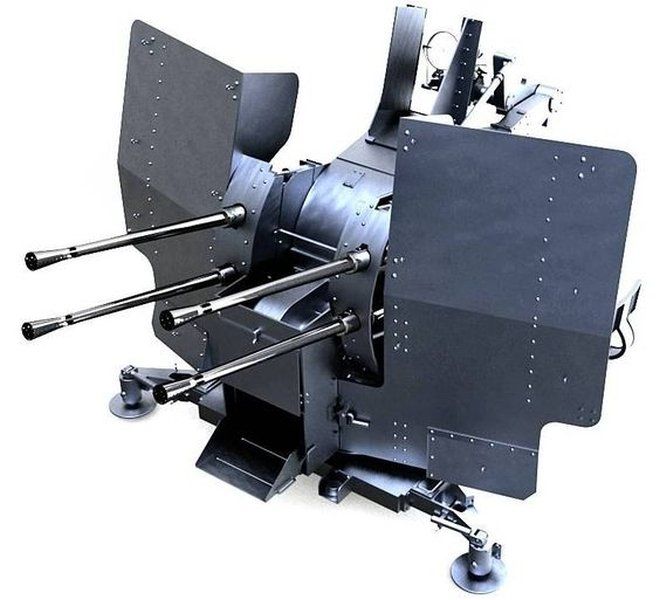
Quelle: www.o5m6.de - scaled,multi-view and coloured Profiles
2 cm Flak 29 Oerlikon on base mount 40
The Navy's 2 cm Flak 29 on a 40 base mount was initially designed primarily for firing at air and sea targets on ships. Later, however, these were also installed in stationary installations. The weapon was aimed using two side-mounted handles with shoulder rests. A drum magazine with 60 rounds could be mounted.
Source: Weapons Arsenal 142
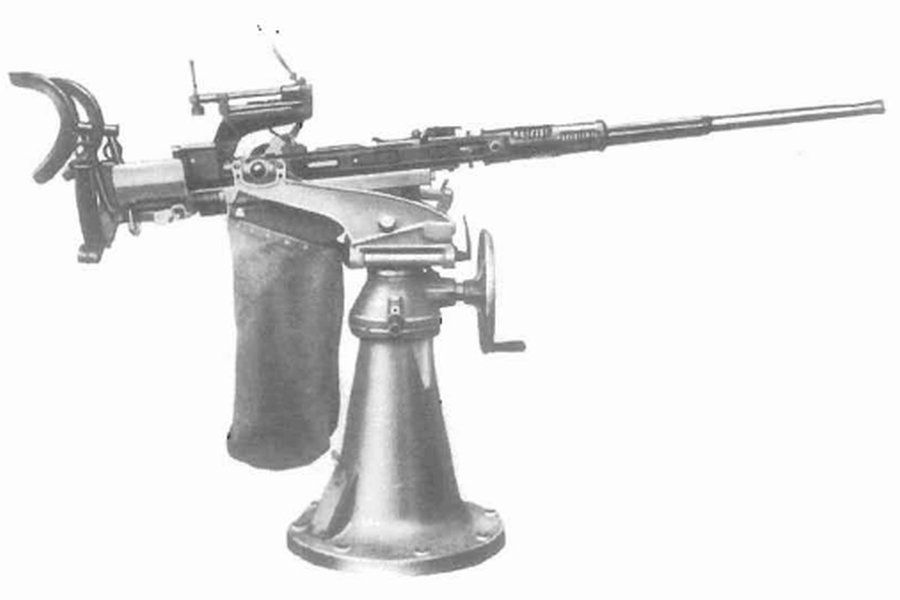
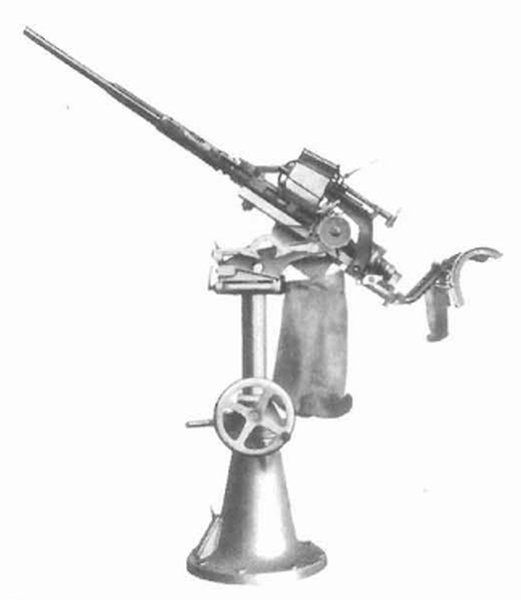
4 cm Flak 28 / Bofors Geschütz
In the 1920s, the Swedish arms manufacturer Bofors developed the 40 mm Bofors gun. Its high rate of fire and high muzzle velocity made it an effective multi-purpose weapon. As a result of the annexation of Austria in 1938, it was also introduced into the German Wehrmacht as the 4 cm FlaK 28.
Those: https://de.wikipedia.org/wiki/40-mm-Bofors-Geschütz
| Technical specifications | |
|---|---|
| Military designation: | 4 cm Flak 28 |
| Developer/Manufacturer: | Bofors / Sweden |
| Year of development: | 1921 - 1931 |
| 2,80 m | |
| Feuerrate | 120 - 330 rounds/min |
| Rotation range: | 360° |
| Shooting range | About. 7,200 - 12,500 Meters |



